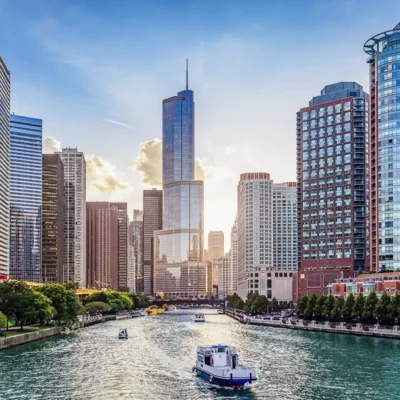Calgary is taking a new approach in constructing its much-anticipated event centre, opting to source building materials from outside the United States. This decision is largely driven by concerns over potential U.S. tariffs and levies on essential construction materials like steel and aluminum. The move aims to control costs, prevent delays, and ensure that the project remains within budget and on schedule.
The event centre is a major initiative in Calgary’s downtown revitalization plan. Designed to replace the aging Scotiabank Saddledome, the new facility is expected to be a world-class venue for sports, concerts, and other large-scale events. The project is a joint effort between the City of Calgary, the Calgary Sports and Entertainment Corporation (CSEC), and the Calgary Stampede, all of whom are committed to ensuring its success.
Why Calgary is Avoiding U.S. Suppliers
Economic and political uncertainties have made sourcing materials from the U.S. a risky move. The threat of increased tariffs and fluctuating trade policies has forced Calgary officials to reconsider their procurement strategy. If they were to rely on U.S. suppliers, they could face unpredictable price hikes, which would put unnecessary financial strain on the project.
“The global trade environment is changing, and we have to be prepared,” said a city official involved in the project. “By exploring alternative suppliers, we can secure high-quality materials at competitive prices without being at the mercy of U.S. tariffs.”
By looking to other regions such as Europe and Asia for materials, the city hopes to keep the project’s budget in check. This diversification strategy also helps mitigate risks associated with political tensions between Canada and the U.S.
A Global Approach to Construction
Instead of depending on American steel and aluminum, Calgary’s event centre project will seek suppliers from various parts of the world. Countries like Germany, China, and India have well-established steel production industries that offer competitive pricing and reliable supply chains. Similarly, aluminum suppliers in Australia and the Middle East present viable alternatives to U.S. sources.
This global approach does not mean that all materials will be imported. The city plans to work with local companies for other aspects of construction, such as interior finishes, landscaping, and design elements. This balanced sourcing strategy ensures that while major materials may come from overseas, the project still supports local businesses and workers.
Economic Impact on Calgary
The decision to source materials from outside the U.S. has both economic and political implications. On the financial side, it helps keep costs predictable, ensuring that taxpayers are not burdened with unexpected budget overruns. On the political side, it signals Calgary’s willingness to adapt to global market conditions rather than being solely dependent on North American trade policies.
Moreover, the event centre itself is expected to generate significant economic activity in Calgary. From job creation in construction to long-term employment opportunities once the venue is operational, the project has wide-reaching benefits. Local businesses, including restaurants, hotels, and retail shops, will also benefit from increased traffic once the facility opens.
Challenges of Sourcing Materials Internationally
While sourcing materials globally presents advantages, it is not without challenges. The biggest hurdle is logistics—transporting large quantities of steel and aluminum from overseas can be time-consuming and expensive. Additionally, supply chain disruptions caused by global events, such as the COVID-19 pandemic, have shown how unpredictable international shipping can be.
To mitigate these risks, Calgary officials are working closely with logistics experts to develop a robust transportation and supply plan. The city is also considering building strategic partnerships with international suppliers to ensure a steady flow of materials, even in the face of unexpected disruptions.
Another challenge is ensuring that materials meet Canadian building codes and safety standards. International suppliers must adhere to strict regulations to guarantee the structural integrity of the event centre. The city has put in place a rigorous quality assurance process to inspect materials before they are used in construction.
Collaboration with Key Stakeholders
The decision to explore global sourcing options was made after thorough discussions between the City of Calgary, CSEC, and the Calgary Stampede. These stakeholders have been closely involved in every stage of planning, ensuring that the best decisions are made for the success of the project.
“Collaboration is key to making this vision a reality,” said a spokesperson from CSEC. “We are committed to building a world-class facility, and that requires strategic thinking in all aspects, including sourcing materials.”
Regular stakeholder meetings help keep everyone informed about the procurement process, timelines, and potential challenges. Transparency in decision-making is a priority, as the event centre is a public-private partnership that directly impacts Calgary’s residents.
Ensuring Sustainability and Environmental Responsibility
Another major factor in material sourcing is sustainability. Calgary is aiming to build a facility that aligns with modern environmental standards. This means selecting materials that are not only cost-effective but also eco-friendly. Many international suppliers now offer steel and aluminum produced using greener technologies, which can help reduce the overall carbon footprint of the project.
The city is also exploring ways to incorporate energy-efficient designs, sustainable construction practices, and waste reduction strategies. The goal is to create an event centre that is not only visually stunning and functional but also environmentally responsible.
What This Means for Calgary’s Future
Calgary’s decision to source materials globally for its event centre highlights the city’s forward-thinking approach. By adapting to changing economic conditions and exploring international partnerships, the city is ensuring that the project remains on track and within budget.
The event centre is set to become a landmark destination, drawing visitors from across Canada and beyond. With its ability to host major sports events, concerts, and cultural gatherings, it will significantly enhance Calgary’s entertainment scene.
Moreover, this project sets a precedent for future large-scale developments in the city. If successful, the strategy of global material sourcing could be applied to other infrastructure projects, helping Calgary remain competitive in an evolving global market.
Final Thoughts
Calgary’s decision to look beyond U.S. suppliers for its event centre construction is a bold but necessary move. Faced with economic uncertainties, the city has chosen to prioritize financial stability and project efficiency by embracing a global approach.
By carefully selecting international suppliers while still engaging local businesses, Calgary is ensuring that its event centre project is built with high-quality materials, remains financially sustainable, and supports local economic growth.
As the project progresses, all eyes will be on Calgary to see how this sourcing strategy unfolds. If successful, it could serve as a model for other cities facing similar trade and construction challenges. One thing is certain—the new event centre will be a game-changer for Calgary, and its impact will be felt for years to come.
More Updates : USA Glory.





